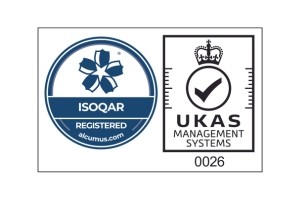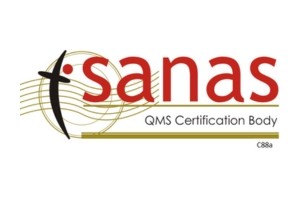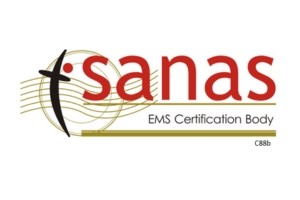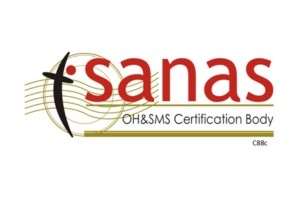There are six (6) implementable clauses within ISO 45001:2018
Occupational Health and Safety Management Standard.
Within this series of posts over the next six weeks we will discuss the requirements to all six clauses and the correct interpretation thereof.

Clause 6: Planning Alignment to the high level structure has seen planning split in a slightly unusual way. To incorporate the high level structure and the aim of the OH&S management system, risk and opportunities have been broken into two elements:
1. Assessment of OH&S risks and other risks to the management system • OH&S risks use the “traditional” likelihood × severity. • Risks to the management system are those more traditionally related to business risk (e.g., effect of uncertainty) such as peaks in work flow and restructuring, as well as external issues such as economic change.
2. Assessment of OH&S opportunities and other opportunities to the OH&S management system • OH&S opportunities are circumstances that can lead to improvement of OH&S performance. This includes adapting work to workers, eliminating hazards, and other opportunities for improving the OH&S management system, such as implementing ISO 45001. Importantly, risks and opportunities shall be determined before planned change. There is also increased emphasis on identifying hazards associated with mental ill health such as workload, bullying, and the leadership and culture of the organization. Additionally, the identification of hazards has to start at the conceptual design stage as well as the ongoing life cycle of workplace, facility, equipment, processes, activity, and so forth. The principles of horizon scanning are also introduced within this clause.
Clause 6.1: Actions to address risks and opportunities
Clause 6.1.1 General
Planning is an integral part of all elements of an OH&S management system. Effective planning is concerned with prevention by identifying, eliminating and controlling hazards and risks. This is particularly important when dealing with health risks, which might only become apparent after a long gestation period. Planning should be a collaborative effort involving personnel throughout the organization. This co-operation is eminently suitable for demonstrating and gaining commitment to continual improvement and promoting a positive health and safety culture throughout the organization.

Planning for the OH&S management system is an ongoing process and is undertaken in order:
- To determine the risks that can affect the OH&S performance of the organization;
- To manage these risks;
- To identify opportunities to improve OH&S performance and the OH&S management system.
When planning for the OH&S management system, the organization should take into account the following:
- The organization and its context (clause 4.1);
- The needs and expectations of workers and other interested parties (clause 4.2);
- The scope of the OH&S management system (clause 4.3).
Planning should be proportionate to the level of risk identified.
While the organization should consider all potential risks to its OH&S performance it should focus on those hazards which are most likely to occur and/or have the greatest impact.
The company should concentrate on those opportunities that can realistically be acted upon, with priority given to those that are most likely to improve performance.
Examples of opportunities to improve OH&S performance include the following:
- Identification of hazards, how they are communicated, analysed and controlled;
- Enhancing the inspection and auditing functions;
- Introduction of job safety analysis and task-related assessments;
- Modification of working processes including the alleviation of monotonous and repetitive work;
- Implementation of permit-to-work processes;Incident or nonconformity investigations and corrective actions;
- Implementation of ergonomic and other injury prevention-related assessments;
- Integration of occupational health and safety considerations at the earliest stage in the design life cycle of plant and equipment;
- Integration of occupational health and safety considerations at the earliest stage in planning for facilities relocation, and/or process redesign;
- Introduction of new technology;
- Improvement of the occupational health and safety culture of the organization;
- Enhancing the visibility of top management’s support for the OH&S management system;
- Enhancing the incident investigation process;
- Improving worker consultation and participation;
- Benchmarking of the organization’s OH&S performance against that of other organizations;
- Collaborating in forums that review issues relating to occupational health and safety.
The organization must maintain documented information on:
- Risks and opportunities;
- The process and actions needed to determine and address its risks and opportunities to the extent necessary to have confidence that they are carried out as planned.

Clause 6.2: OH&S objectives and planning to achieve them
6.2.1 OH&S Objectives
The organisation should establish objectives in order to maintain and improve the OH&S management system and to achieve continual improvement in its OH&S performance.
When determining its OH&S objectives the organisation must take into account:
- The results of the assessments of risk and opportunities;
- Applicable legal and other requirements;
- The results of consultation with workers and where applicable, their representatives.
OH&S objectives can be integrated with other business objectives such as quality or environment and should be set at relevant functions and levels as defined and decided upon by the organisation.
The OH&S objectives should address both broad corporate OH&S issues and OH&S issues that are specific to individual functions and levels within the organisation.
Because the term “maintain and improve its OH&S management system” is used in this clause, the organisation can set some objectives in order to maintain a certain level of performance and can set other objectives for the purpose of achieving an improvement in its OH&S performance.
This means that in the case of the former, once a level of performance has been achieved and no further opportunity for improvement can be identified, the organisation can set an objective that maintains that set level of performance until such time as new opportunities are identified.
The OH&S objectives should be consistent with the OH&S policy and if practicable, be measurable or capable of performance evaluation. Ideally, the objectives should be specific, measurable, achievable, realistic and time-oriented (SMART).
Typical examples of OH&S objectives include the following:
- Objectives to increase or reduce a numerical value such as reducing manual handling incidents by 10% or increasing VDU risk assessments by 20%;
- Objectives to introduce controls or eliminate hazards such as the introduction of LEV in a particular process or elimination of a particular hazardous substance from a process;
- Objectives to introduce less hazardous materials in specific products;
- Objectives to increase levels of worker satisfaction in relation to OH&S such as a reduction of workplace stress or an increase in worker participation in and consultation on OH&S issues;
- Objectives to increase awareness or competence in performing work tasks safety;
- Objectives to meet legal requirements prior to their enactment.
The objectives should be monitored, communicated and be updated as appropriate.
The organisation is not required to establish OH&S objectives for every risk and opportunity it determines.

6.2.2 Planning to Achieve OH&S Objectives
In order to achieve the objectives a programme or programmes should be established.
A programme is an action plan for achieving one or all of the OH&S objectives
The programme, at a minimum, should address the following:
- What is to be done;
- What resources (e.g. financial, human, equipment & infrastructure) will be required;
- Who will be responsible;When it will be completed;How the results will be evaluated, including indicators for monitoring.
The programme should be reviewed at planned intervals, and adjusted as necessary, to ensure that the objectives are achieved. This review can be part of the management review process.
The organisation must maintain and retain documented information on the OH&S objectives and plans to achieve them.
Join our mailing list to receive upcoming posts: http://www.isoqar.co.za/





